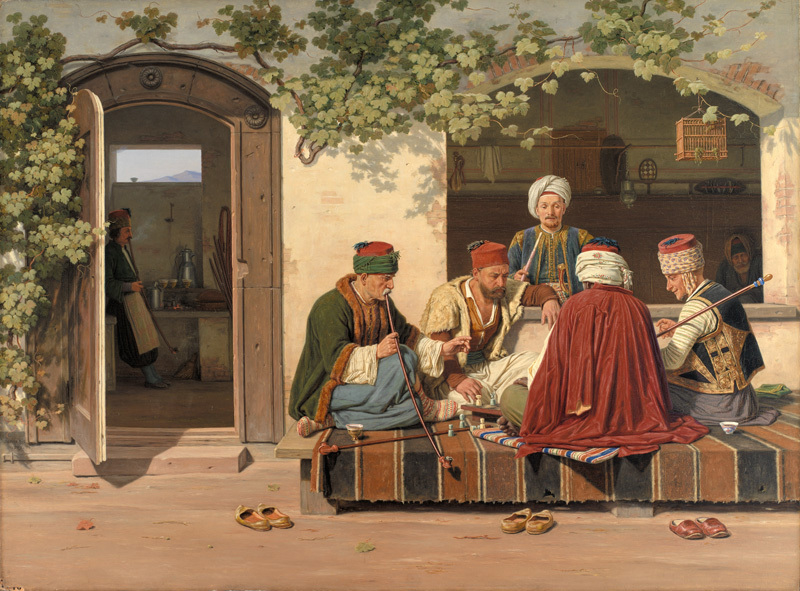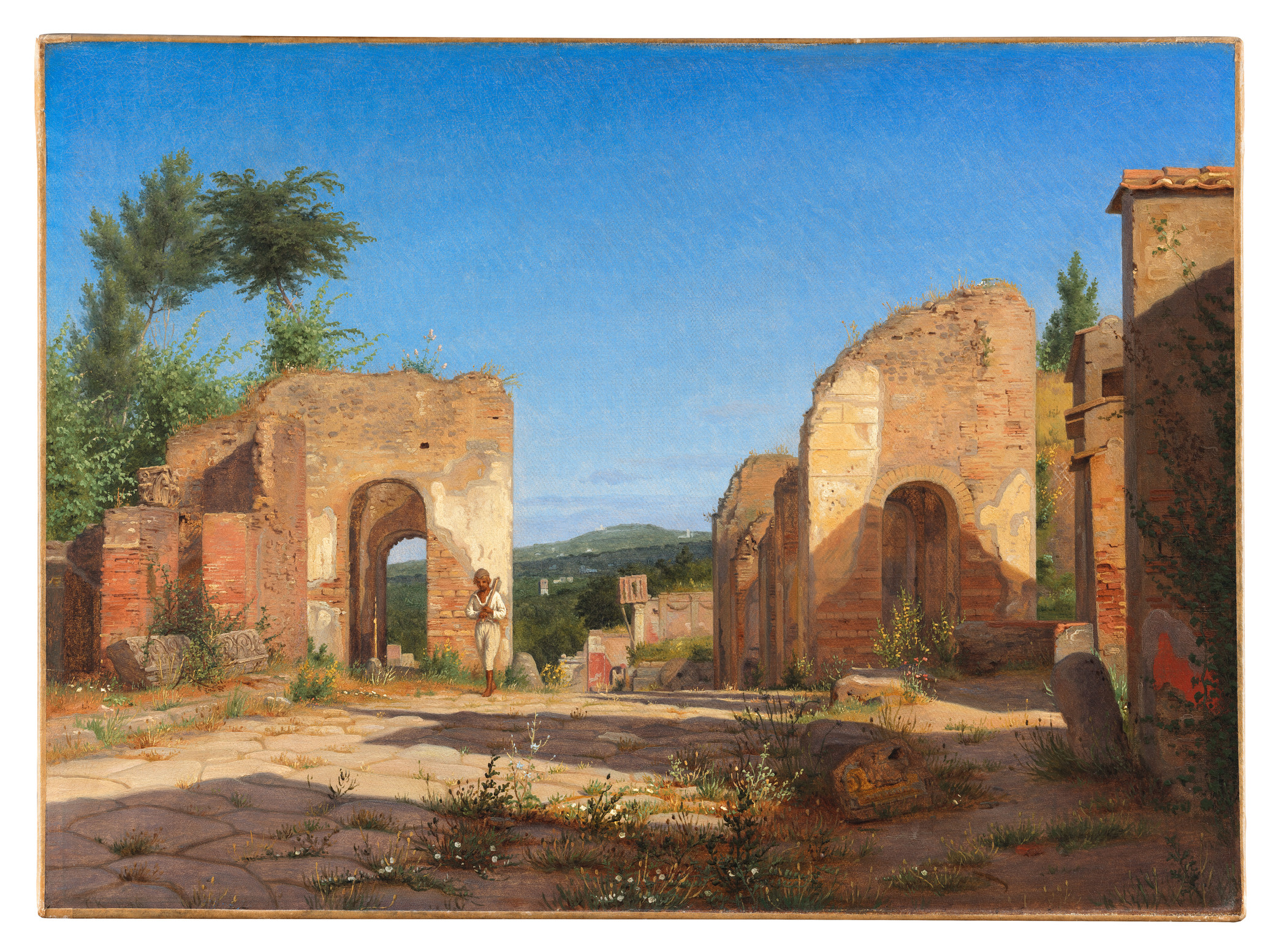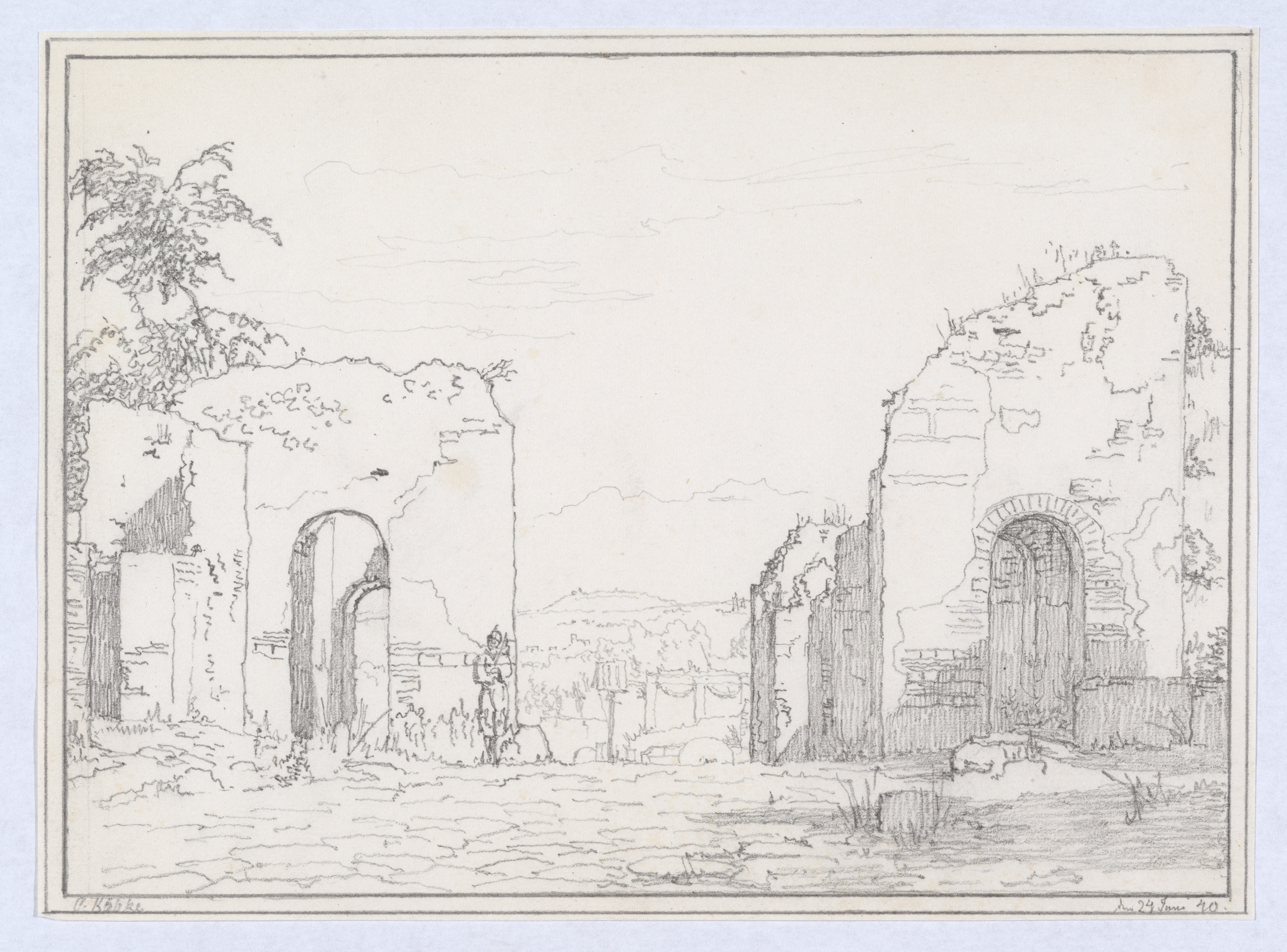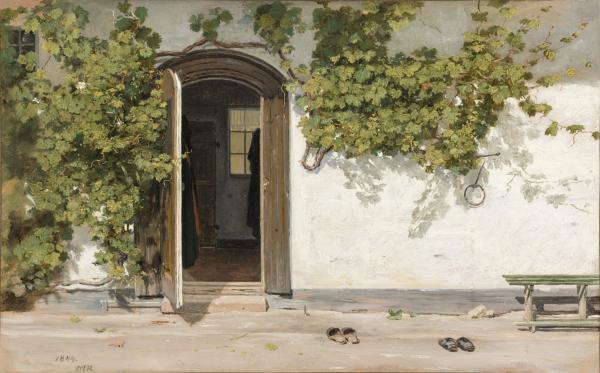On a recent visit to the Getty Center to see the beautiful exhibition Beyond the Light: Identity and Place in Nineteenth-Century Danish Art, currently on view, I recognized a work from LACMA’s collection on loan for the show, The Entrance to the Vicarage at Hellested (1844) by Martinus Rørbye. One of the most well-known Danish artists active during the so-called “Golden Age” of Danish painting in the first part of the 19th century, Rørbye’s training at the renowned Royal Danish Academy of Fine Arts in Copenhagen was complemented by extensive travels throughout Italy and Sicily, as well as further afield to important historical sites in present-day Greece and Turkey, where he made numerous sketches which provided subject material for many of his finished compositions made in the studio once he returned to Copenhagen.
This oil-on-paper illustration mounted on canvas—despite being quite modest in scale—draws one’s eye to the exquisitely rendered image even when in the company of much more dynamic compositions. As the observer to this scene, we stand in an exterior courtyard before a doorway surrounded by a dense growth of ivy, the leaves casting shadows upon the surface of the wall, two pairs of neatly positioned slippers on the pavement. The wooden door opens into an entry vestibule, revealing a wooden cabinet and hanging garments, more clues to human activity beyond the quietude. We’re left to wonder what else lies within the hidden interior. Aside from the greenery of the ivy on the wall, the image is quite monochrome, with subdued whites, grays, browns, and beiges. However, the observer senses the warmth of sunshine and the clear light of the sky, manifested by the shadows reflected on the wall, and an aura of calm and order permeates the scene. I find it interesting to compare this preoccupation of 19th-century Danish artists like Rørbye to illustrate an idealized vision of the tidy lives of their country’s citizenry to camouflage the more troubling aspects of socio-political upheaval that was actually consistent throughout this time period, when Denmark was subjected to military invasion by larger and stronger European powers. In contrast to that, there is no sense of trouble in this image, which instead infuses order and stability, a visual invitation for the viewer to safely enter into a space of comfort and solitude.

The catalogue that accompanies the exhibition provides fascinating and informative essays about the art, artists, and history of this singular time in Denmark. It also illustrates another painting by Rørbye in the collection of the Statens Museum for Kunst in Copenhagen, A Party of Chess Players Outside a Turkish Coffeehouse and Barbershop (1845), which utilizes the identical Danish vicarage courtyard setting of The Entrance to the Vicarage at Hellested. However, in this work, created just one year later, the artist has transported the scene to another part of the world with a group of turbaned Turkish figures in the foreground, as well as figures within the interior spaces behind the main group. Looking back on his earlier travels to sites of the Ottoman Empire, Rørbye energizes the more Germanic lonely Romanticism of his earlier painting (reminiscent of the figureless landscape paintings of Caspar David Friedrich) by embellishing the composition with an exoticized dimension of Romanticism that draws upon the fascination with foreign, orientalist worlds. (Think of the Algerian-inspired paintings of Eugène Delacroix.) Rørbye magically transforms the hushed and rather staid Protestant Scandinavian environment into an active street scene in Constantinople, altering details down to the footwear, which have been turned into three pairs of carefully placed Turkish slippers.

As I continued through Beyond the Light, I discovered another work from LACMA’s collection, Gateway in the Via Sepulcralis in Pompeii (1846) by Christen Købke. Like Rørbye, Købke studied at the Royal Danish Academy of Art and then traveled south to Italy, where he visited Rome, Naples, Sorrento, Capri, and Pompeii, not quite as far as Rørbye. Taking inspiration from the requisite “Grand Tour'' that mandated northern European artists travel to classical sites in Italy and Greece to complete their education, Købke illustrates the ruins of this historic city, which became a tourist attraction because of the terrible events that instantaneously transformed it into a memorial to a world destroyed that continues to mesmerize visitors to this day. The artist’s addition of a single human figure emphasizes the monumental scale of the setting, with decaying stone arches neatly framing the conical top of a mountain suggestive of Mount Vesuvius. The viewer stands in the foreground alongside the shadows of higher walls located beyond the picture plane. “Via Sepulcralis” translates to “Road of the Tomb,” a sepulchral reference relating to death and the grave, symbolizing the catastrophic events that befell Pompeii so long ago.

The exhibition also includes a remarkable graphite sketch from a private collection that is a direct study for Gateway in the Via Sepulcralis in Pompeii. Købke captures the components of the final painting with refined detail in graphite, quite clearly forming the outlines, forms, and shading for the composition that would then be realized in colorful paint on canvas. The rare opportunity to compare and contrast these two related works side by side is just one of the highlights of this stunning exhibition, on view at the Getty Center through August 20.



